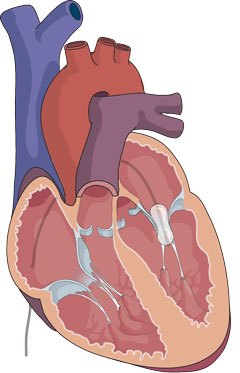Overview of Valvuloplasty
For some patients, valvuloplasty (or PTBV, for percutaneous transluminal balloon valvuloplasty) is an alternative to open heart surgery for treating a hardened, narrowed heart valve (heart valve stenosis).
A catheter with a deflated balloon at its tip is threaded through an artery or vein into your heart. The catheter is positioned inside the narrowed valve and the balloon is inflated.
As the balloon expands, it stretches the narrowed valve, separating the valve leaflets (flaps) and helping the valve move better. When the balloon is deflated and removed, blood flows more easily through the treated valve. This reduces the work required of your heart to push blood through the valve.
 In valvuloplasty, a balloon expands to stretch the narrowed valve. Valvuloplasty treats a narrow or stiff mitral valve or aortic valve.
In valvuloplasty, a balloon expands to stretch the narrowed valve. Valvuloplasty treats a narrow or stiff mitral valve or aortic valve.
Patient Instructions
Learn what happens (and what you need to do) before, during, and after this procedure from our patient handout:
© 2018 Intermountain Healthcare. All rights reserved. The content presented here is for your information only. It is not a substitute for professional medical advice, and it should not be used to diagnose or treat a health problem or disease. Please consult your healthcare provider if you have any questions or concerns.